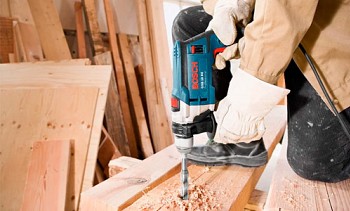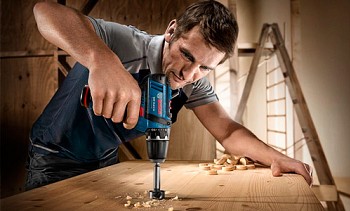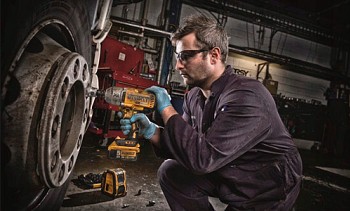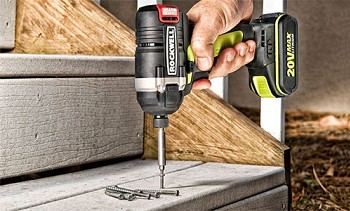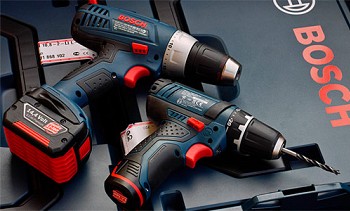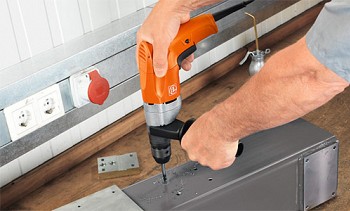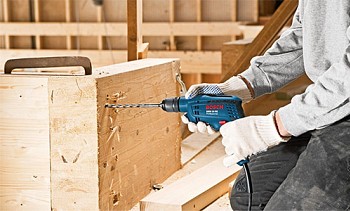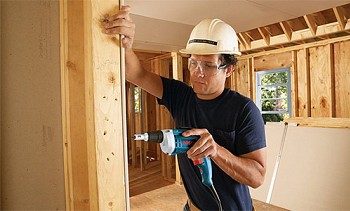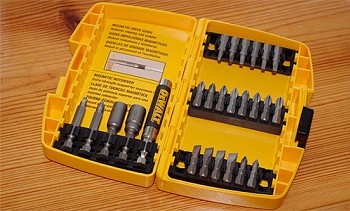How to choose a screwdriver - technical parameters and selection criteria
Every man who crafts something at home usually has a screwdriver. Well, or planned to purchase it. After all, this tool cannot be avoided either during repair, or during construction, or during small-scale housework. To assemble furniture, hang a ledge or a shelf, unscrew old screws - in all these cases this device will help out. Today we will talk about how to choose a screwdriver that best suits your ideas. At the same time, we determine where the “golden mean” is located in the combination of price and quality.
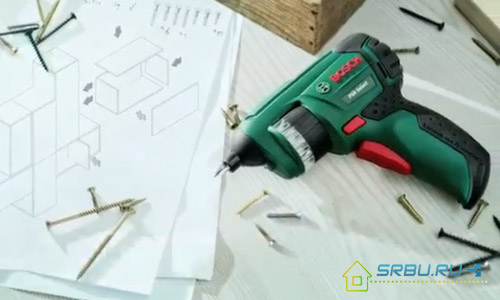
Where are screwdrivers used and how are they arranged
This tool is actively used by both the owners of the cottages, and those who live in their own apartment. No matter what construction or repair work is carried out, a screwdriver is indispensable. Any home master who is accustomed to relying on his strength and skill will say this. And professional builders also certainly have a screwdriver in their arsenal. It is convenient for them to fix plasterboard sheets during finishing work. And even furniture without this tool is completely impossible to assemble.
Consider the elements that make up a screwdriver:
- An electric motor rotating at a certain speed.
- The planetary gear type transfers force to the spindle, which is equipped with a chuck.
- A clutch is attached to the gearbox that controls the torque.
- To attach nozzles, called bits, to the motor shaft, a chuck is provided.
- The electronic control system is equipped with a button to start the device, as well as a reverse switch.
- A battery is typically used as a power source. Therefore, this type of device is convenient to use where there are no electrical outlets, as well as in places where the cord does not reach.
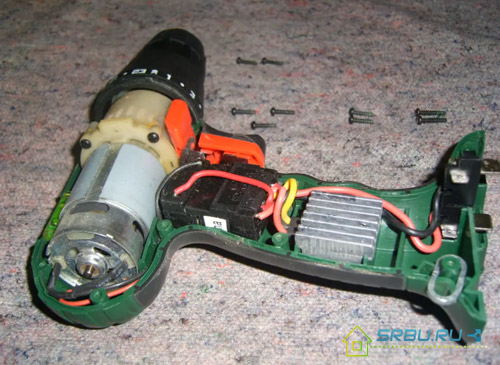
Disassembled screwdriver.
And now we’ll list for what kind of work it is advisable to use a screwdriver:
- Screwing and unscrewing a wide variety of fasteners. These are self-tapping screws, and bolts, and screws, and, of course, screws.
- When mounting with this device, you can tighten the dowels and anchors tightly.
- Wood, both soft and hard, is perfectly drilled with a screwdriver.
- They can also drill a metal surface.
- With this device, it is quite possible to cut threads in metal (and not only) parts.
How not to make a mistake when choosing a screwdriver
Keep in mind that when you come to the store, you should not pay attention only to the cost of the device. When deciding which screwdriver to choose, carefully read the passports of the models you like. They will necessarily indicate the most important technical characteristics of the device. These are: rotation speed, type of battery (if, of course, it is) and torque. For these parameters, and you need to choose a tool.
For "pros" or a household screwdriver
Think about what repair and construction work you plan to carry out. Based on this, and make your choice. If you are not so enthusiastic about making it, and it will be enough for you to get the device out of the case just a couple of times a month, it makes no sense to take a professional screwdriver. Really, there’s no need to make a game of sheepskin - an amateur model that works on battery power is enough for you. She has all the necessary functions, and she weighs much less than a professional.
If almost every day you need to assemble, screw or build something, then look towards not very cheap, but very powerful professional models. They, as a rule, work from a network, have impressive dimensions and weight. It makes sense to choose such network screwdrivers for those who have a lot of work ahead with heavy loads.
About torque and speed
The torque determines what force the screwdriver applies to the screw being screwed in, or with what force it resists the load. Appliances are used in everyday life, the torque of which is from 10 to 15 Newton meters. Professional models can have a torque of up to 130 Newton meters, which makes them able to drill very hard materials. The motor shaft of such devices makes 1200-1300 revolutions in one minute. Household models are content with 400-500 rpm.
Depending on the torque, the length of the screw being screwed in, as well as its diameter, is selected. More powerful screwdrivers can tighten thicker and longer screws. Also, these devices can be used when working with fairly hard materials, without fear of damage.
The screwdriver differs from other power tools in that its torque can be adjusted. For this, a simple device is used - a limiter. It is a ring located immediately after the chuck. Using it, you can set a certain force after which the screw will no longer be screwed. Screwed in a screw - the cartridge immediately stopped, although the engine still spins. At the same time, the sound of a rattle is clearly audible. Such a limiter protects the tool from many troubles: wear of the bit, disruption of the slot in the self-tapping screw, as well as its too deep recessing into the surface.
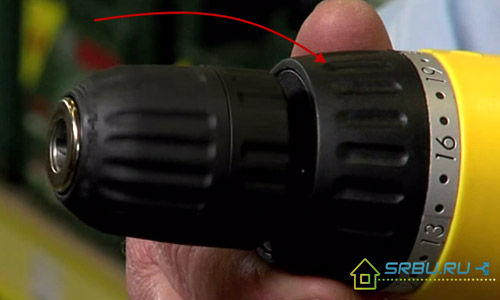
Maximum torque limiter.
A ratchet at the motor clutch protects it from overload, allowing the rotating shaft to slip freely. The established maximum torque, by the way, is quite sufficient to turn the screw very tight, and not to overload the engine. To switch to the drilling mode, the coupling must be moved to the opposite extreme position. In this case, the torque limit will be removed, i.e. the screwdriver will work like a conventional drill.
Typically, screwdrivers have two operating modes - one allows you to drill, the other - to turn the screws.
To choose the right screwdriver, consider some more nuances. It is necessary to check whether the electric motor works stably under load, whether its rotation frequency is maintained. The quality of the power supply, its ability to hold a charge, and the power of the device with a dead battery are also important.
Rechargeable or mains powered?
There are two types of screwdrivers: those powered by a power cord and having their own battery. As for the first ones, they have a solid weight, and you can work with them only not far from electrical outlets. However, you can buy an extension cord, the range of use of the tool will depend on its meter. Cordless devices are lighter and also have a significant advantage - autonomy.
It is far from always necessary to build near power outlets, therefore, in the field, models with their own battery are, of course, more convenient. Agree, a little pleasure - to carry meters of wire, which, as luck would have it, also gets confused all the time. And when working at heights, it’s not at all possible to use network models. After all, they are also heavy - raising them up is problematic. Therefore, we consider in more detail models with a battery. It is important to choose the right type.
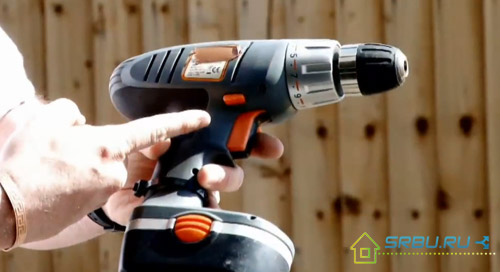
The most widely used cordless screwdriver.
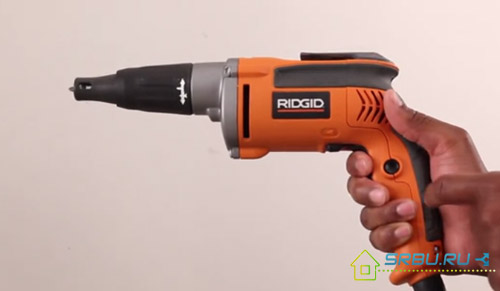
Network, more professional model.
Choose a battery wisely
To work with comfort, and not to run to recharge the tool every half hour, carefully refer to its battery. There is no particular difficulty in how to choose a cordless screwdriver - just take a more powerful device.And a spare battery, if one is included, will also provide excellent service. As for the recharge time, it takes about an hour for a professional instrument, and up to 7 hours for an amateur one. It depends on the charging device.
Three types of batteries are used in screwdrivers:
- nickel cadmium,
- lithium ion
- nickel metal hydride.
1. The latter become more and more popular, and today many new European models of screwdrivers are equipped with eco-friendly Ni-MH batteries. Small and lightweight, with no memory effect, these batteries have only two drawbacks. They do not like frosts and overcurrents. Yes, the price is still a bit high. But the number of recharges with a stable capacity they have - 1,500 times. For storage, it is necessary to charge such batteries well, and it is not permissible to store them in a discharged form. But they do not have such a large memory effect as nickel-cadmium and are more powerful.
2. Batteries based on nickel-cadmium cells are more toxic, but they have twice as many recharges as the previous type. Therefore, the tool sold today in stores and in markets, for the most part, has Ni-Cd batteries. They are also quite cheap, but they are not afraid of frost at all. So there’s nowhere better suited for Russian conditions. But these batteries only suffer from strong self-discharge, and also the memory effect - these are significant disadvantages. For storage, do not forget to completely discharge them. Otherwise, you run the risk of getting a battery with a lower capacity.
3. Rechargeable lithium-ion batteries are not often built into screwdrivers. They are even more sensitive to cold than nickel-metal hydride batteries, and their power is low. The number of recharges is up to 3000, there is no memory effect. The large battery capacity is poorly compensated by the prohibitively high price. They are practically not subject to self-discharge. They are somewhat more convenient when used at home but the price is not pleasing.
To choose a good screwdriver, take the time to choose its battery. After all, a battery costs more than half the price of a tool, more precisely, from 60 to 70 percent. Read the instrument passport and compare the following parameters:
- Battery voltage;
- battery capacity;
- the presence or absence of a memory effect;
- the presence or absence of self-discharge;
The battery is a removable element. It consists of several power supplies in a common housing. They are fastened together with plates. The total voltage is summed at the output, amounting to 24, 18, 14.4, 12 or 10 volts. It determines the duration of continuous operation and the power of the device.
The capacity depends on which element is installed inside the battery. It determines the total number of recharges and battery life. Over time, capacity decreases.
The charge memory effect is the ability to lose capacity if the battery has not been discharged and then fully charged. That is, before charging it must be completely discharged. Lying idle in a case, a charged battery will lose its charge anyway. Therefore, it is also necessary to completely discharge the nickel-cadmium battery if the device is to be sent for storage.
And one more tip about the battery: look not only at the output voltage, but also at the ratio of the current strength to the operating time. This value is measured in amperes per hour. The greater its value, the longer the battery will hold a charge. Batteries with the same voltage can have different ampere / hour values.
Varieties of cartridges
There are cartridges for clamping parts of two types: keyless and key. To clamp the latter, you need a special gear type wrench. If a quick-clamping mechanism is used, everything is much simpler - you can insert a drill into it without difficulty, and a bit holder.
In turn, a key-operated cartridge can have either one or two couplings. If one coupling is used, then the device additionally has a shaft locking mechanism when replacing one nozzle with another.If there are two couplings, then instead of locking the cartridge holds one of the couplings. The second clamps the cartridge.
Backstop
A reverse stroke, commonly called a reverse, will help to unscrew the screw tight and pull the hopelessly stuck drill out of solid material. As a rule, electronic pole switching of the electric motor is used for this. For convenience, the switch to reverse mode is located next to the start button of the device. He has two positions, and in the position midway between them, the device is blocked. This is necessary so that you do not accidentally press the button at the wrong time.
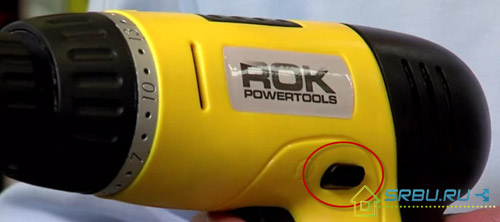
Reverse switch function.
Convenience and Design
When thinking about how to choose a screwdriver for your home, do not limit yourself to viewing pictures on websites. After all, you need to use the tool - so hold it in your hands, checking if its buttons are tight, whether they switch well. The center of gravity should be in the handle - so the hand will get tired less when working. After the cartridge, there must be a ring to adjust the twisting force. When the screw is fully screwed, this device will not allow it to go too deep. And the snap will not wear out quickly.
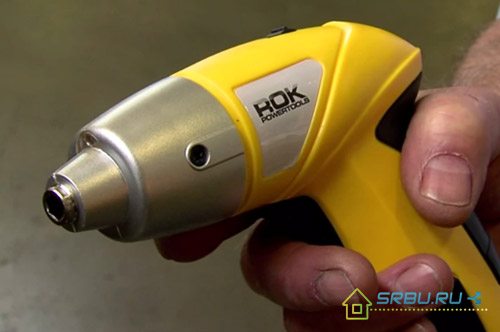
A small and low-power screwdriver is useful when assembling furniture.

The classic model containing all the basic functions.
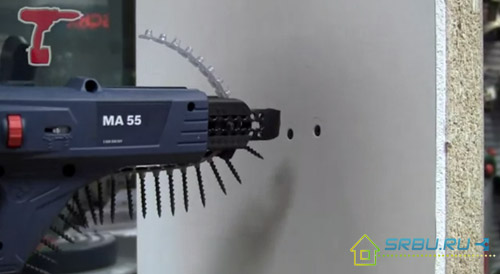
An automatic screwdriver screwdriver is a whole combine that is useful to professionals.
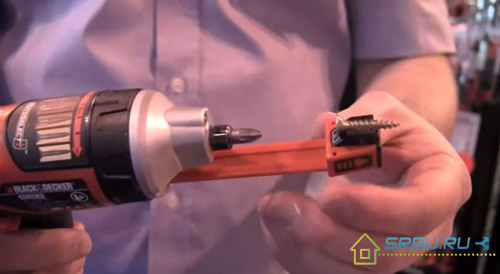
A screwdriver with a magnetic holder for self-tapping screws.
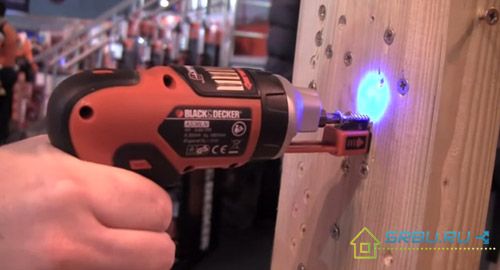
Backlight function at work.
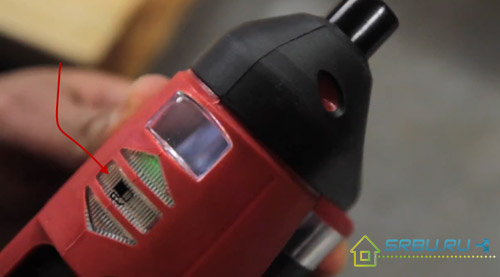
Battery indicator
What lies in the case
The configuration of a screwdriver may be different. It is better if it includes not only the device, but also all the necessary nozzles. This will save in the future both money and time. After all, screws, bolts and screws are produced today with many options for caps - therefore, various nozzles will be needed.
Conclusion
Having learned all the possible parameters in this article, write down the most optimal ones that are right for your needs and go to the shopping raid to make your choice.
For a home appliance, these can be the following parameters:
- Torque: from 10 Newton meters.
- 400 - 500 rpm.
- 2 operating modes (twisting and drilling).
- The presence of a reverse function.
- Type of device: rechargeable.
- Battery Type: Nickel-Cadmium or Nickel-Metal Hydride.
- Voltage: 10 - 14.4 V.
- Value: ampere / hour, the more the better, if two batteries have the same voltage, but this indicator is higher, then it is better to give preference to this particular device.
Video. Choose a drill / driver

